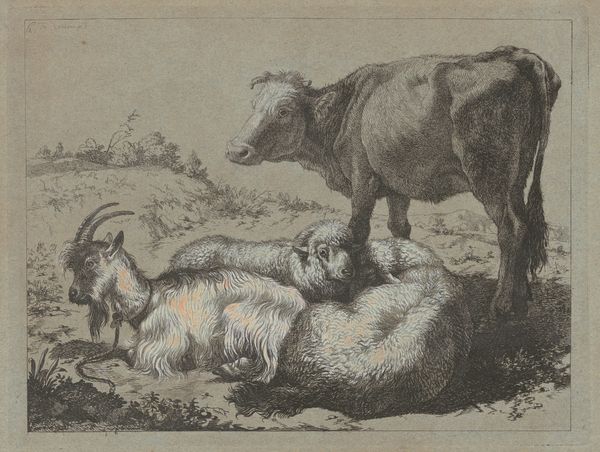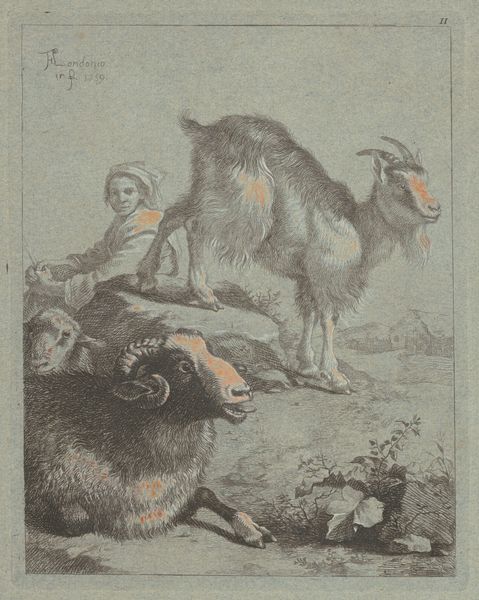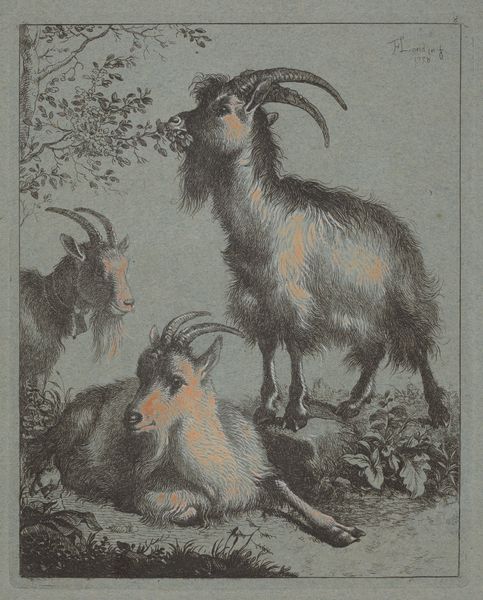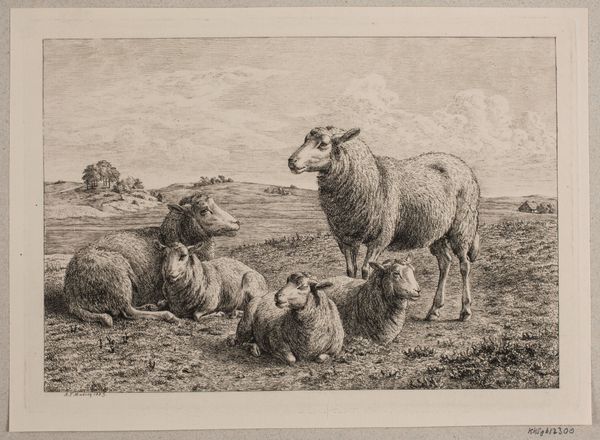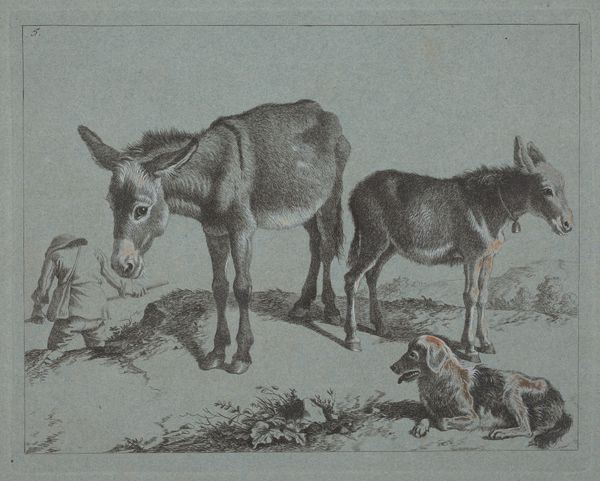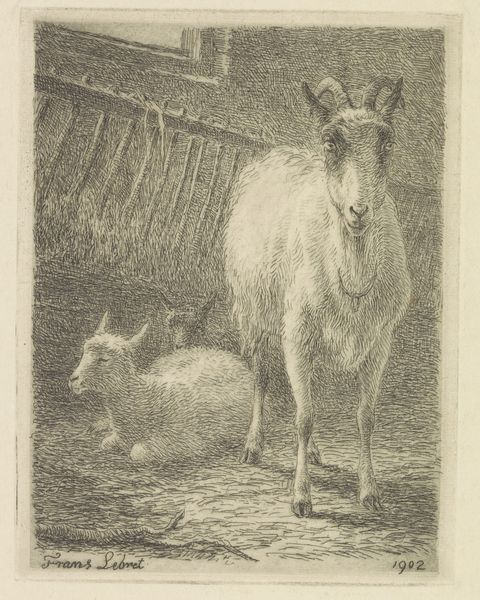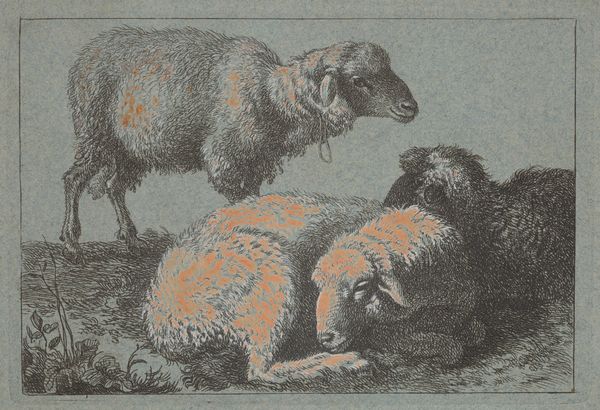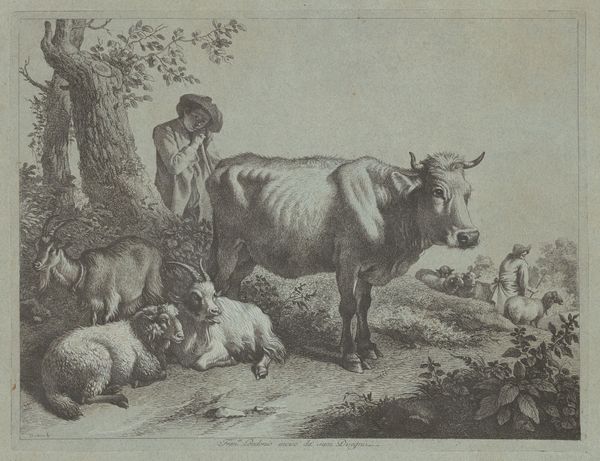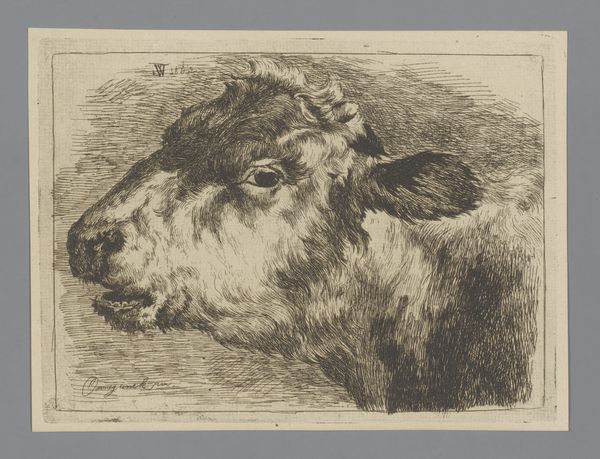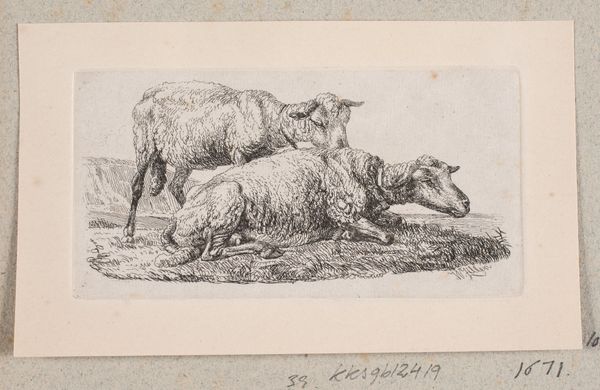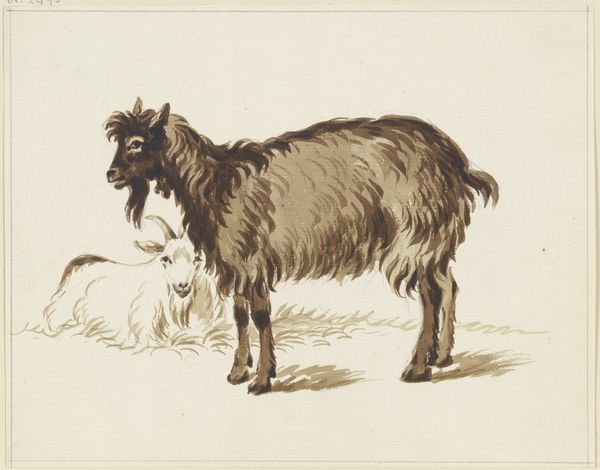
drawing, print, pencil
#
drawing
# print
#
pencil sketch
#
landscape
#
figuration
#
pencil drawing
#
pencil
#
genre-painting
Dimensions: plate: 8.6 x 12.8 cm (3 3/8 x 5 1/16 in.) sheet: 27.6 x 22.1 cm (10 7/8 x 8 11/16 in.)
Copyright: National Gallery of Art: CC0 1.0
Editor: Here we have Francesco Londonio's "Goat and Two Kids" from 1758, rendered in pencil as both a drawing and a print. There’s a kind of rough-hewn charm to it. What do you see in this piece beyond its pastoral scene? Curator: Looking at this, I immediately think about the socio-economic context. Animal husbandry, particularly goats, was intrinsically linked to the livelihoods of many during this period. The very act of representing it, making it available via a reproducible print, speaks to a changing relationship with labour and agricultural production. Notice how the artist's skill elevates a common subject? Editor: So, you're saying it's less about the animals themselves and more about... their economic role? Curator: In part. It’s also about the artistic labour involved. The pencil as a medium – a relatively accessible material – and the printing process…consider how they democratized access to art. Think about the engraver, the printer, the distributors – a whole chain of production necessary for this image to reach an audience. Were these skilled crafts or an entirely novel manufacturing process for cultural material? Editor: That’s a perspective I hadn't considered. I was focusing on the image's sort of simple beauty, but I see what you mean now about the material conditions and social impact surrounding its creation and distribution. Curator: Exactly. And it compels us to challenge traditional boundaries between art and craft. Was Londonio celebrating rustic simplicity or engaging with burgeoning commercial markets for art? Perhaps both? How would its accessibility impact those artists making unique commissions? Editor: It really changes how you look at something as seemingly simple as a drawing of goats! I'll definitely consider the material processes and labor that went into artmaking of this period moving forward. Curator: It invites a more layered understanding, doesn't it?
Comments
No comments
Be the first to comment and join the conversation on the ultimate creative platform.

